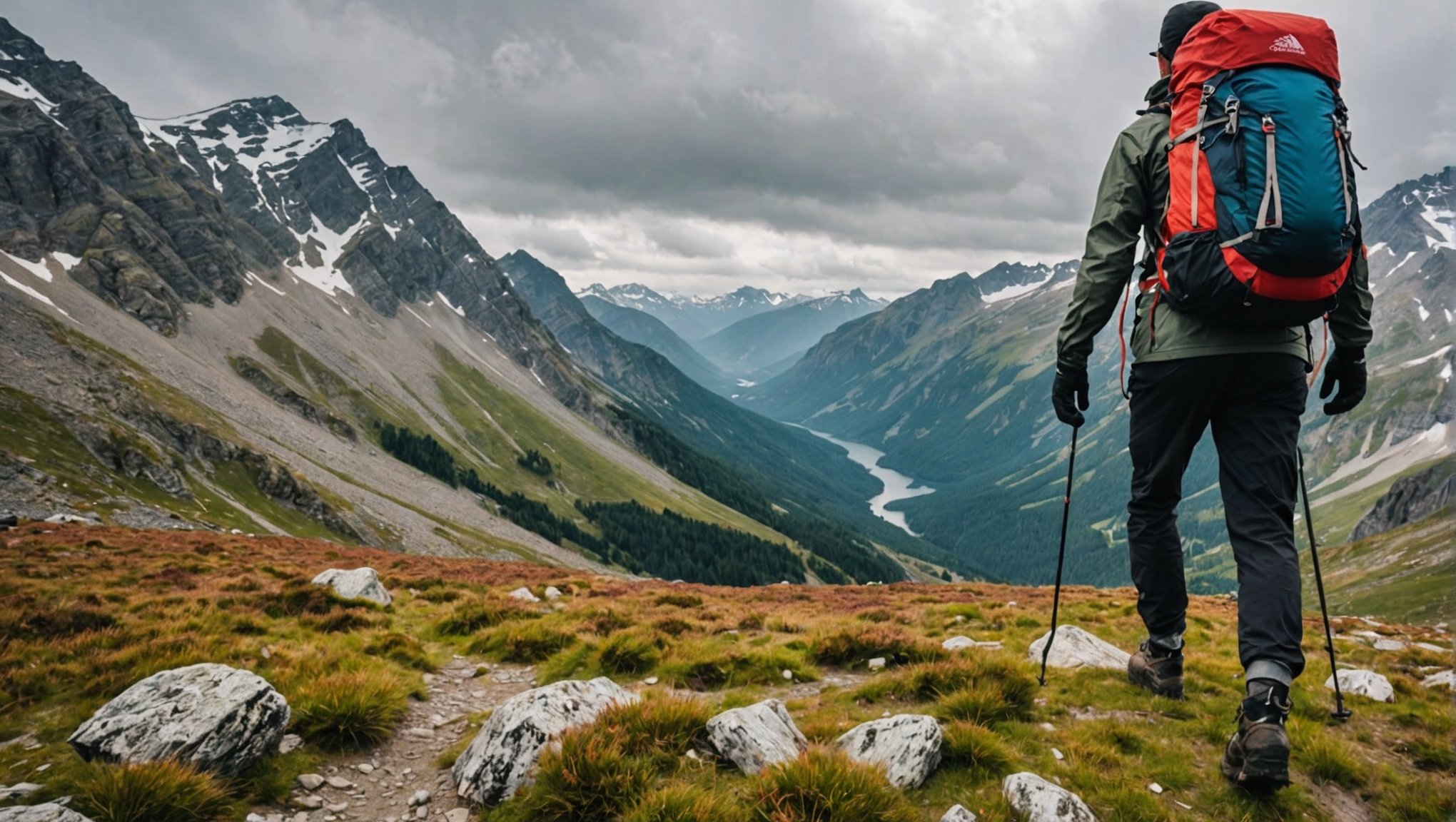Mountain hiking offers exhilarating adventures, yet unpredictable weather can quickly change your experience. Choosing the right outdoor gear becomes essential for comfort and safety. This guide will provide a comprehensive approach to selecting optimal gear that can withstand various weather conditions. From waterproof jackets to versatile footwear, be prepared to tackle the elements head-on. Uncover how thoughtful gear choices can enhance your hiking experience and keep you safe on those stunning mountain trails.
Understanding Weather Conditions for Mountain Hiking
Mountain hiking offers breathtaking views and an exhilarating sense of adventure, but it requires a keen awareness of weather conditions. These environments are known for their unpredictable and rapidly changing weather patterns. In mountainous regions, climates can shift dramatically within hours, transforming a sunny day into a stormy ordeal.
Also to read : Top Tips for Preserving Your Designer Handbags: How to Safely Store Them and Keep Their Shape Intact
Before embarking on a hike, it is crucial to check reliable weather forecasts. This step ensures hikers are prepared for any sudden changes, such as temperature drops, precipitation, or strong winds. Being aware of the forecast can help in planning appropriate gear and clothing, significantly enhancing safety and comfort during the hike.
Climate awareness is not only about preparation but also about understanding how these variations can affect your hiking experience. For instance, high altitudes often lead to cooler temperatures than expected, even in summer. Snow or rain can make trails slippery and dangerous, while fog can obscure paths and landmarks, increasing the risk of getting lost.
Topic to read : Transform Your Sleep Space: Tips for Enhancing Rest and Boosting Skin Health
By understanding and respecting these weather conditions, hikers can make informed decisions about when and where to hike, ensuring a safer and more enjoyable experience. Always remember, nature's beauty is best appreciated when approached with caution and respect.
Essential Clothing for Mountain Hiking
When it comes to mountain hiking, selecting the right hiking clothing is crucial for comfort and safety. One effective approach is the layering system, which allows hikers to adapt to varying weather conditions by adding or removing layers as needed.
Key Components of a Layering System
-
Base Layer: This layer is essential for moisture management. Opt for moisture-wicking materials like merino wool or synthetic fabrics that draw sweat away from the skin, keeping you dry and comfortable.
-
Insulation Layer: Designed to retain body heat, this layer is crucial in colder climates. Fleece or down jackets are popular choices, providing warmth without adding excessive weight.
-
Outer Layer: Also known as the shell, this layer protects against wind, rain, and snow. Look for breathable and waterproof materials, such as Gore-Tex, to ensure protection from the elements while allowing moisture to escape.
Clothing Recommendations for Different Weather Conditions
- Warm Weather: Lightweight, breathable fabrics with UV protection.
- Cold Weather: Insulated jackets and thermal layers.
- Wet Conditions: Waterproof shells and quick-drying materials.
By understanding and implementing a layering system, and selecting appropriate hiking clothing, hikers can better manage their comfort and safety in the ever-changing mountain environment.
Footwear Selection for Variable Terrain
Choosing the right footwear is essential for a successful mountain hiking experience. The terrain's variability demands careful consideration of the type of hiking boots or shoes you wear.
Types of Hiking Footwear
- Hiking Boots: Ideal for rugged and uneven terrains, offering excellent traction and ankle support. They're perfect for long hikes with heavy backpacks.
- Hiking Shoes: More flexible and lightweight than boots, suitable for less challenging trails. They provide decent grip and are often preferred for day hikes.
- Sandals: Best for easy, flat trails in warm weather. They offer minimal protection but are breathable and comfortable for short distances.
Features to Consider
When selecting footwear, focus on key features like waterproofing to keep your feet dry in wet conditions. Insulation is crucial for colder climates, ensuring warmth during hikes. A good grip or traction is vital for safety, preventing slips on slippery or rocky surfaces.
Recommendations
For wet and muddy trails, opt for waterproof hiking boots with solid traction. In dry, rocky areas, hiking shoes with a durable sole are ideal. For warm, dry climates, consider breathable sandals for short, easy hikes. Each choice ensures comfort and safety tailored to specific terrains and weather conditions.
Must-Have Accessories for Safety and Comfort
When preparing for a mountain hike, selecting the right hiking accessories is as crucial as choosing clothing and footwear. These gear essentials enhance both safety and comfort, ensuring a more enjoyable experience.
Importance of Headgear and Gloves
Headgear, such as hats and beanies, is vital for protection against sun and cold winds. A hat can shield your face and neck from harmful UV rays, while a beanie keeps you warm in cooler climates. Gloves are equally important, offering warmth and protection against the elements, especially in unpredictable weather.
Recommended Accessories
- Gaiters: These protect your lower legs and boots from mud, snow, and debris, keeping you dry and comfortable.
- Trekking Poles: Essential for maintaining balance on uneven terrain, reducing strain on your knees and enhancing stability.
- Hydration Systems: Staying hydrated is crucial. Consider using hydration packs or water bottles with easy access to ensure you have enough fluids during the hike.
Safety Gear Essentials
- First Aid Kits: Always carry a compact first aid kit to handle minor injuries or emergencies.
- Navigation Tools: Equip yourself with a reliable map and compass or GPS device for safe navigation, especially in unfamiliar areas.
Navigation and Technology for Hikers
Navigating the great outdoors requires a combination of traditional and modern tools. Hiking navigation can be significantly enhanced by using a mix of maps, compasses, and GPS devices. While modern technology offers convenience, it is crucial to understand traditional methods to ensure safety.
Maps and compasses are the foundation of hiking navigation. They provide a reliable way to chart your course and are indispensable when technology fails. Learning to read a map and use a compass is an essential skill for any hiker, offering a dependable backup in remote areas.
In contrast, GPS devices and smartphone apps have revolutionised hiking navigation. They provide real-time location data and are incredibly accurate, making route planning and tracking easier. These tools can also offer weather updates, which are crucial for adapting to changing conditions on the trail.
However, relying solely on technology can be risky. Batteries can die, and signals can be lost. Thus, having a backup navigation method is vital. Always carry a physical map and compass as a safety net.
By combining traditional and modern navigation methods, hikers can confidently explore trails while staying prepared for any situation.
Product Reviews of Top Outdoor Gear
Exploring the vast world of outdoor gear can be daunting, but understanding the nuances of popular products can guide you to the best choices. When it comes to hiking clothing, brands like Patagonia and The North Face are often praised for their durability and performance. Patagonia's jackets are renowned for their eco-friendly materials, while The North Face offers a wide range of options for different weather conditions.
In terms of footwear, Salomon and Merrell stand out in outdoor gear reviews. Salomon's hiking boots are celebrated for their traction and support, making them ideal for rugged terrains. Merrell, on the other hand, excels in providing lightweight hiking shoes, perfect for less challenging trails.
Accessories play a crucial role in enhancing hiking experiences. User feedback often highlights the benefits of trekking poles for stability and gaiters for protection against debris. However, some find trekking poles cumbersome on easy trails.
When comparing products, consider the specific conditions you'll face. For instance, waterproof gear is essential for wet climates, while breathable fabrics are a must in warm weather. By focusing on product comparisons and user reviews, you can select the best hiking gear tailored to your adventures.
Expert Insights and Recommendations
Embarking on a mountain hike requires more than just enthusiasm; it demands careful preparation and expert advice. Seasoned hikers emphasize the importance of selecting the right gear tailored to personal needs. Through interviews, they share invaluable hiking tips that can transform your outdoor experience.
Gear Selection and Testing
Experienced hikers advocate for thorough gear testing before setting out. Trying out equipment in controlled environments helps identify personal preferences and ensures functionality. This strategy is particularly crucial for items like hiking boots and backpacks, where comfort and fit are paramount.
Adapting to Weather Changes
Sudden weather shifts are a common challenge in mountainous areas. Experts suggest always carrying an extra layer and a waterproof jacket, even if the forecast looks promising. This hiking strategy ensures you're prepared for unexpected rain or temperature drops, enhancing safety and comfort.
Personal Preference and Comfort
While expert advice is invaluable, personal preference plays a significant role in gear selection. What works for one hiker might not suit another. Thus, experimenting with different brands and styles is recommended to find what feels best for you.
By incorporating these hiking strategies, you can enhance your preparedness and enjoy a safer, more comfortable adventure.
Preparation Checklists for Hikers
Embarking on a mountain hike requires thorough preparation. A well-structured hiking checklist can ensure you're equipped for any situation, enhancing both safety and enjoyment.
Comprehensive Packing List
A detailed packing list tailored to various weather conditions is essential. For warm weather, pack lightweight clothing, sun protection, and ample water. In colder climates, include insulated layers, a waterproof jacket, and thermal gloves. Don't forget essentials like a map, compass, and first aid kit.
Safety Measures and Emergency Preparedness
Safety tips are crucial for any hike. Ensure you have a reliable communication device and inform someone of your itinerary. Carry a whistle and reflective gear for visibility. In case of an emergency, a first aid kit and a multi-tool are indispensable. Familiarise yourself with basic first aid procedures to handle minor injuries.
Suggested Pre-Hike Planning Steps
Pre-hike planning is vital for a smooth experience. Check weather forecasts, trail conditions, and local wildlife advisories. Plan your route, including rest stops and estimated times. Familiarise yourself with the terrain and difficulty level to ensure you're physically prepared. By following these steps, you can reduce risks and enjoy a memorable adventure.











